Kingdom Fungi Rank Species | Division Basidiomycota Scientific name Trametes versicolor Higher classification Trametes | |
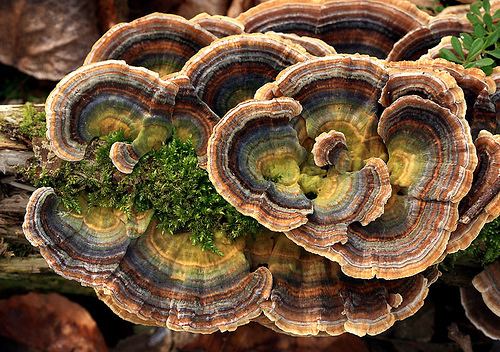 | ||
Similar Trametes, Hen‑of‑the‑wood, Polyporus, Lingzhi mushroom, Polyporaceae | ||
Turkey tail trametes versicolor starship fungi perfecti
Trametes versicolor – also known as Coriolus versicolor and Polyporus versicolor – is a common polypore mushroom found throughout the world. Meaning 'of several colours', versicolor reliably describes this fungus that displays different colors. For example, because its shape and multiple colors are similar to those of a wild turkey, T. versicolor is commonly called turkey tail.
Contents
- Turkey tail trametes versicolor starship fungi perfecti
- The turkey tail bracket fungus trametes versicolor
- Description and ecology
- Chemistry
- Research and uses
- References
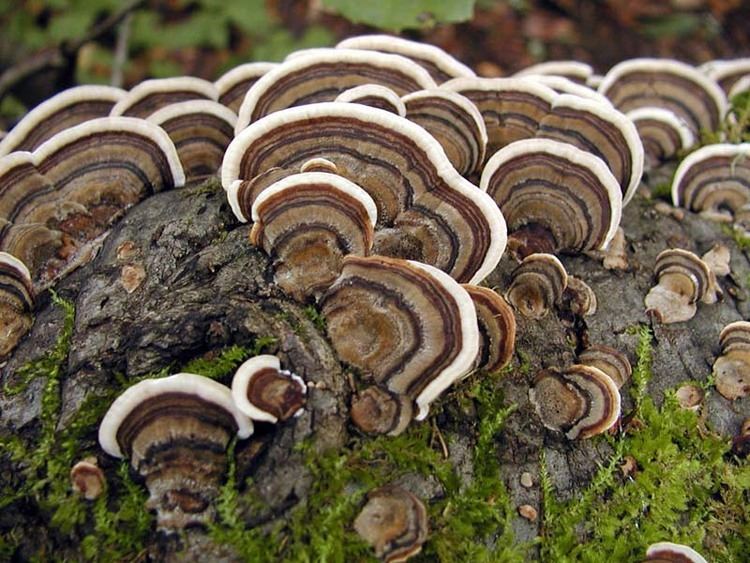
The turkey tail bracket fungus trametes versicolor
Description and ecology
The top surface of the cap shows typical concentric zones of different colours. The flesh is 1–3 mm thick and has leathery texture. Older specimens, such as the one pictured, can have zones with green algae growing on them, thus appearing green. It commonly grows in tiled layers. The cap is rust-brown or darker brown, sometimes with blackish zones. The cap is flat, up to 8 x 5 x 0.5–1 cm in area. It is often triangular or round, with zones of fine hairs. The pore surface is whitish to light brown, pores round and with age twisted and labyrinthine. 2-5 pores per millimeter.
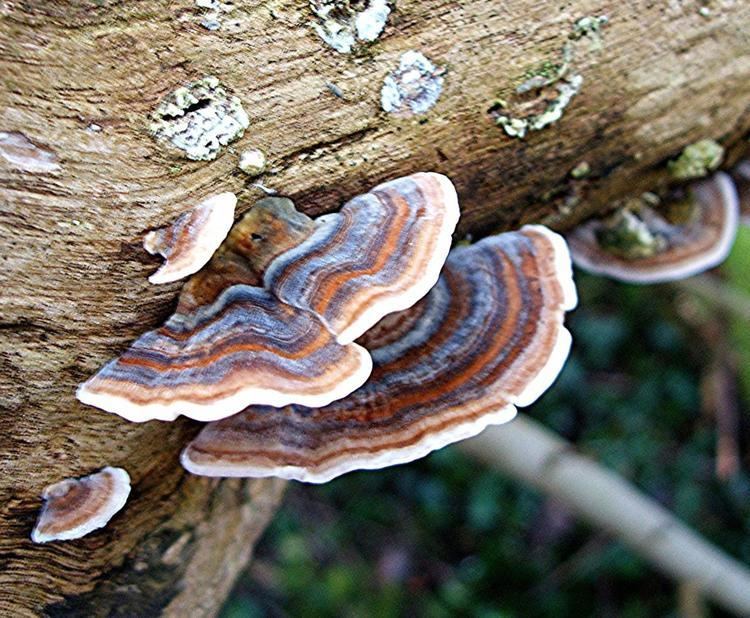
It may be eaten by caterpillars of the fungus moth Nemaxera betulinella and by maggots of the Platypezid fly Polyporivora picta. and the fungus gnat Mycetophila luctuosa
Chemistry
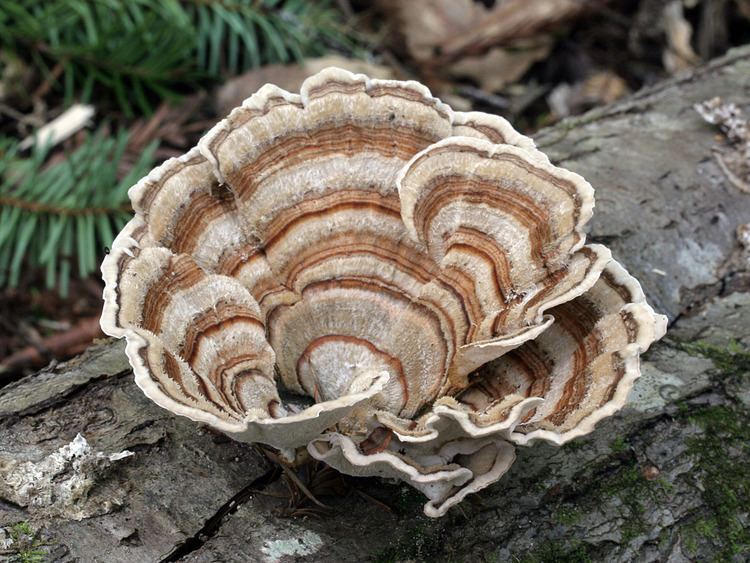
T. versicolor contains polysaccharides under basic research, including the protein-bound PSP and B-1,3 and B-1,4 glucans. The lipid fraction contains the lanostane-type tetracyclic triterpenoid sterol ergosta-7,22,dien-3B-ol as well as fungisterol and B-sitosterol.
Research and uses
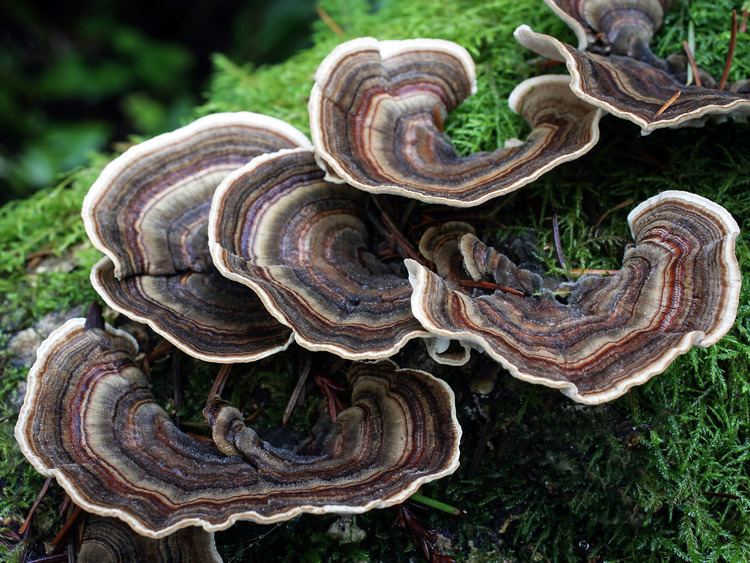
When used in combination with certain chemotherapy regimens, PSK may benefit patients following surgical removal of stomach and colorectal cancers, but clinical trials in patients with breast cancer, leukemias, and liver cancer remain inconclusive as of 2016.
PSK is possibly useful as an adjuvant in the treatment of gastric, esophageal, colorectal, breast and lung cancers. PSK adjuvants are under study for their potential to affect cancer recurrence.
